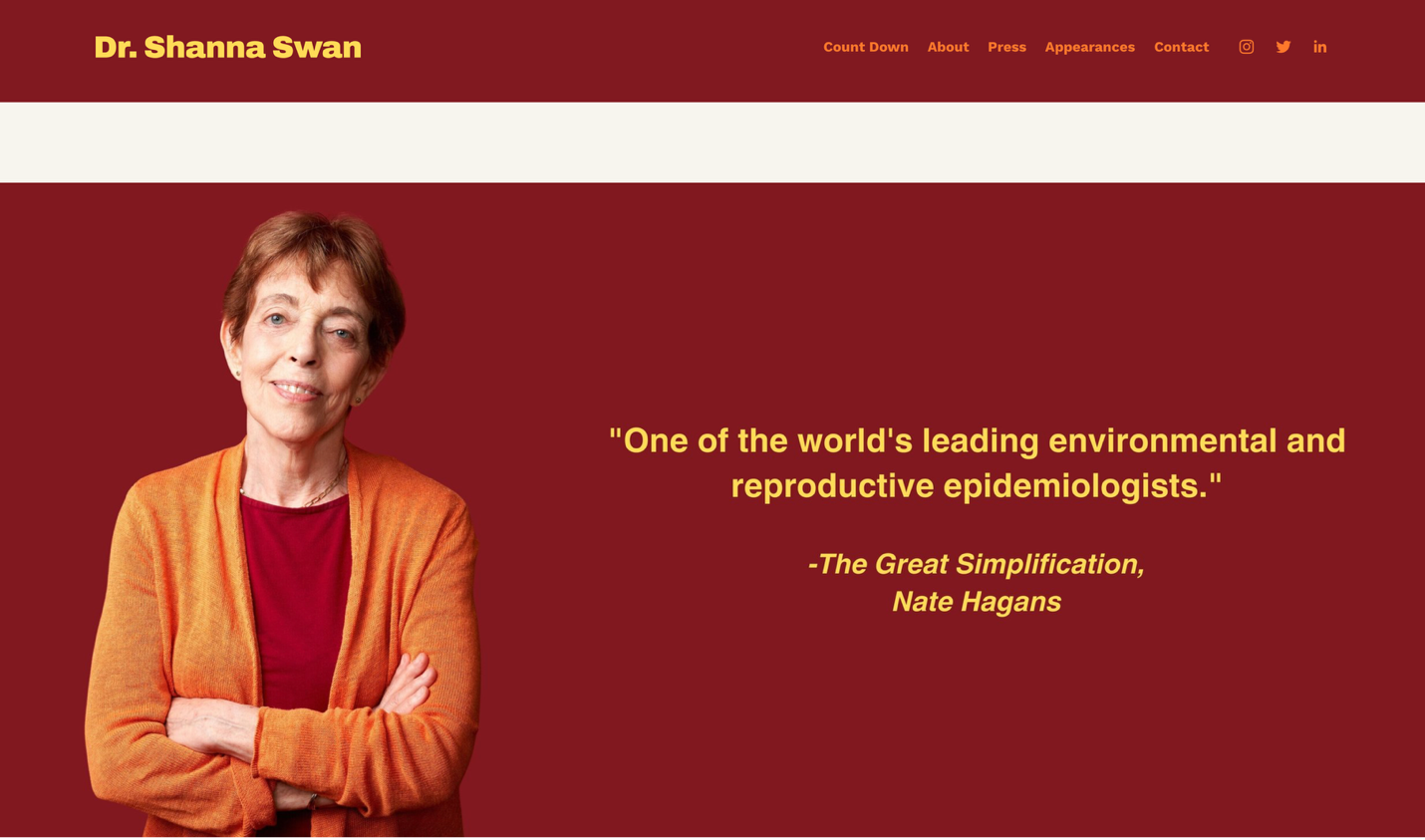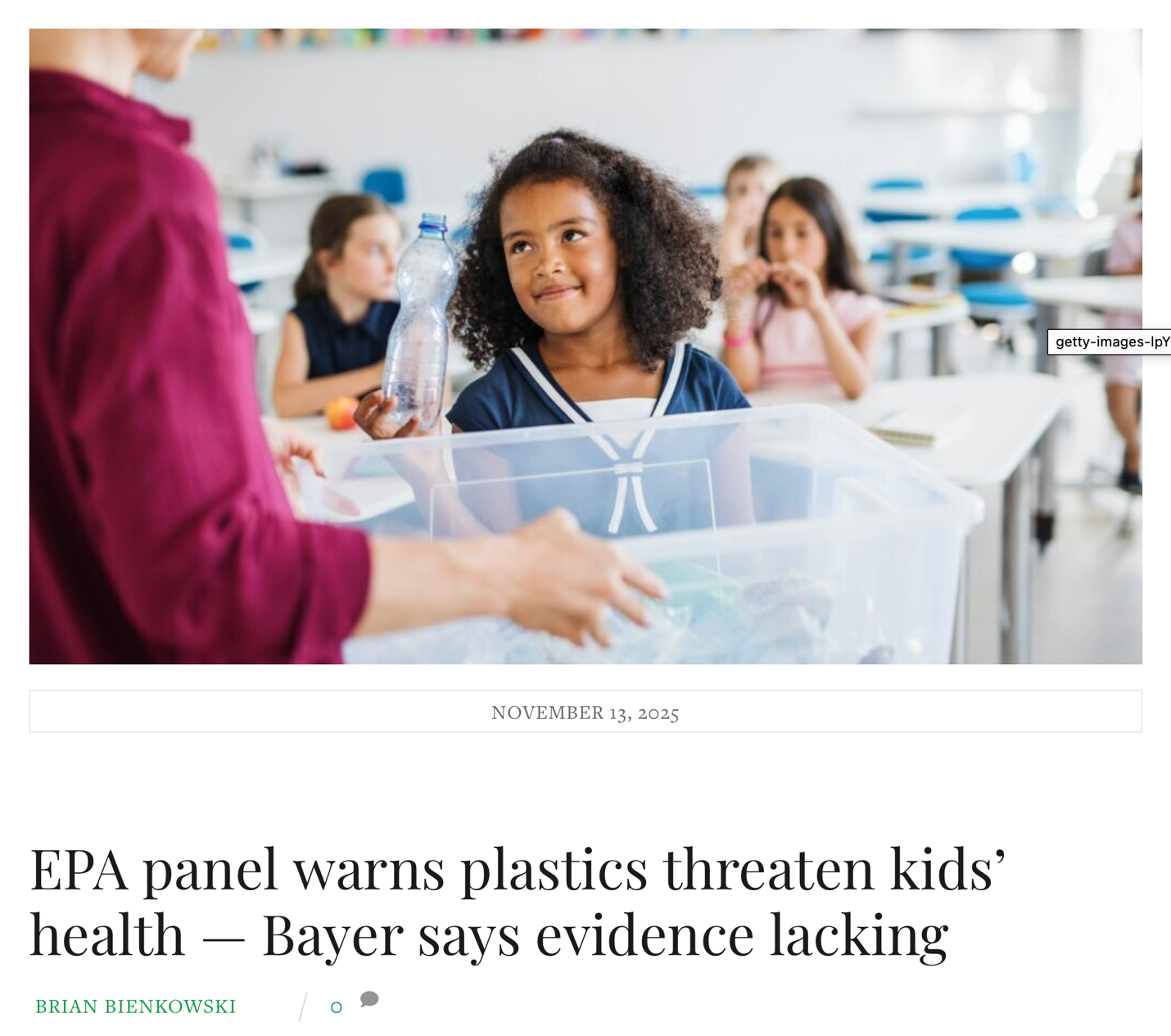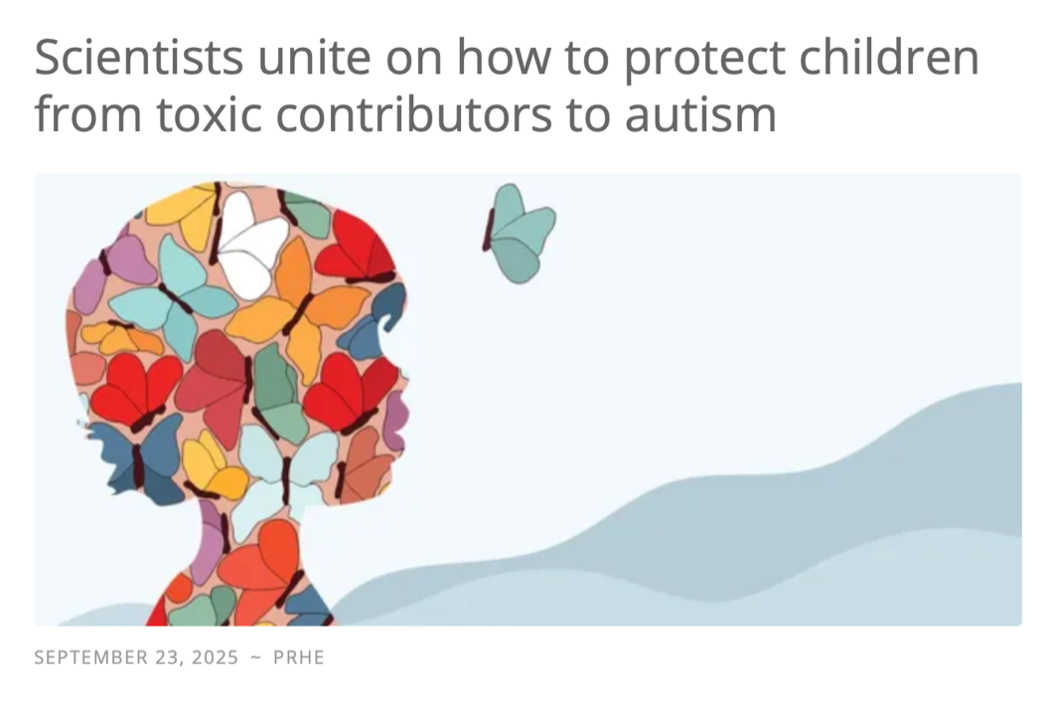 I think most people would like Aaron Blair, PhD, MPH, Scientist Emeritus at the National Cancer Institute (NCI), and I doubt he would fit most people’s preconceived ideas about illustrious scientists in general and accomplished epidemiologists in particular. He grew up on a farm in Kansas, and despite decades in Maryland at the National Cancer Institute, he still sounds Midwestern – downhome, and very, very smart. He has dedicated his life to working on the problem of environmental chemicals and human health. He recounts how some of his initial interest in the problem came from his experience on the farm. He was familiar with how farmers actually use chemicals: “I knew how people went about it, and we didn’t take a lot of care.” He emphasizes that, unlike the general public, farmers know what they are using. They have an economic interest in knowing what they are applying, when, and where: “The general public can never tell you what they’ve used, but farmers can tell you. It’s a matter of economics. They don’t want to use substances they don’t need.” That was one of the reasons for selecting farmers as subjects for the Agricultural Health Study (AHS), a huge study performed by Aaron Blair and many others at the National Cancer Institute that has gone on for years. It’s not just that farmers are exposed to a lot of chemicals, which they are. It’s that farmers can recall with much greater accuracy what pesticides they’ve used. Even pesticide applicators can be mostly unaware of what they are spraying on lawns: for them, it just might be the chemical that comes in a white bucket. Though they can forget or make mistakes like anyone else, farmers, Dr. Blair says, are the group best able to report types and amounts of exposures, and misclassification of exposures is the greatest confounding factor in this kind of study: “Overall, they can report much better than almost everyone else. Farmers are unique; particularly in the center of the country, they are both management and labor. They decide to use a pesticide, purchase it, mix it up, and apply it themselves.” What researchers found, over and over again, was that although farmers in general have a much healthier life and better outcomes than others because of outdoor exercise and less smoking and drinking than average, they had worse outcomes when it came to certain kinds of cancer. As Dr. Blair says, they are in the valley when it comes to most health outcomes, but there are peaks for these cancers – so they stand out.
I think most people would like Aaron Blair, PhD, MPH, Scientist Emeritus at the National Cancer Institute (NCI), and I doubt he would fit most people’s preconceived ideas about illustrious scientists in general and accomplished epidemiologists in particular. He grew up on a farm in Kansas, and despite decades in Maryland at the National Cancer Institute, he still sounds Midwestern – downhome, and very, very smart. He has dedicated his life to working on the problem of environmental chemicals and human health. He recounts how some of his initial interest in the problem came from his experience on the farm. He was familiar with how farmers actually use chemicals: “I knew how people went about it, and we didn’t take a lot of care.” He emphasizes that, unlike the general public, farmers know what they are using. They have an economic interest in knowing what they are applying, when, and where: “The general public can never tell you what they’ve used, but farmers can tell you. It’s a matter of economics. They don’t want to use substances they don’t need.” That was one of the reasons for selecting farmers as subjects for the Agricultural Health Study (AHS), a huge study performed by Aaron Blair and many others at the National Cancer Institute that has gone on for years. It’s not just that farmers are exposed to a lot of chemicals, which they are. It’s that farmers can recall with much greater accuracy what pesticides they’ve used. Even pesticide applicators can be mostly unaware of what they are spraying on lawns: for them, it just might be the chemical that comes in a white bucket. Though they can forget or make mistakes like anyone else, farmers, Dr. Blair says, are the group best able to report types and amounts of exposures, and misclassification of exposures is the greatest confounding factor in this kind of study: “Overall, they can report much better than almost everyone else. Farmers are unique; particularly in the center of the country, they are both management and labor. They decide to use a pesticide, purchase it, mix it up, and apply it themselves.” What researchers found, over and over again, was that although farmers in general have a much healthier life and better outcomes than others because of outdoor exercise and less smoking and drinking than average, they had worse outcomes when it came to certain kinds of cancer. As Dr. Blair says, they are in the valley when it comes to most health outcomes, but there are peaks for these cancers – so they stand out.
One pivotal experience as his interest in this field grew was looking at NCI maps of cancer incidence by county. “The thing that drove me, thinking about farmers, was the high rate of leukemia you could see running through the center of the U.S. It showed on the map. What could that be? The counties that had the high rates weren’t the big cities, as with other kinds of cancer…. They were rural. So it had to be agricultural.” From there, Dr. Blair and his colleagues performed a meta-analysis of data on farmers and cancer collected from around the world. A meta-analysis is a study of data that has already been gathered, all grouped together. There were huge correlations to certain kinds of cancers. Then they looked at death certificates. Next, they talked to the farmers themselves. All these different kinds of studies pointed to the same thing: pesticide exposures were linked to certain cancers: prostate cancer, non-Hodgkin’s lymphoma, leukemia, soft-tissue cancers, multiple myeloma, and brain cancer. This is the work Dr. Blair is proudest of after decades of cancer research. This sequence of carefully planned studies eventually led to the extraordinarily productive Agricultural Health Study, which followed more than 89,000 individuals living on farms or applying pesticides commercially in North Carolina and Iowa, and resulted in dozens of articles published in major scientific journals. The great strength of this project is that unlike much other important research on cancer, it does not depend on individuals’ ability to recall exposures. It surveys those with a high likelihood of exposure and moves forward through time, asking questions and recording disease as it occurs. This type of experimental design is called a cohort study, and where it is possible, it is able to eliminate many types of bias and confounding factors that plague other experimental designs.
That does not mean that this kind of design is without its drawbacks. When I ask Dr. Blair about how he has dealt with such troubling research, when I ask if it bothered him, he does not hesitate at all. “All cancer epidemiologists – it bothers us. We’re working with an awful disease. There are other awful diseases, but cancer is one. It hits people at all ages. The work that epidemiologists do, we wait until something terrible happens to someone. We have to wait, and there is something unsettling about that. Then you have to contact people. It’s amazing how understanding and helpful people they are. They are in bad straights, but they do their best to help.” Having long experienced personal gratitude for the researchers who have spent whole careers answering these crucial questions, I am struck by the fact that Dr. Blair is grateful right back. This appreciation is articulated formally as well, right on the main page for the Agricultural Health Study (2014). Think about this. All those cancer patients and families, who are struggling through the worst days of their lives, the greatest tragedies they have endured, but still reporting back to help others. All those researchers, laboring day in and day out at work that, I can attest from my own days in the lab, can be tedious. All that hard-earned data, published in major medical journals. All those physicians and nurses reading the studies and working hard to treat the patients, downstream of exposures and cancer diagnoses. If we are not paying absolute heed to information that has cost the lives of individuals, the labor of thousands, and the untold millions of dollars to fund the research, we are throwing away all the best of what makes us human, of what makes us an intelligent species. And yet, policymakers are not paying attention. The Toxic Substance Control Act, so badly in need of reform, languishes unreformed in Congress. More on this in Part II.
When asked about policy on environmental chemicals, Dr. Blair hesitates. Laughs a little.
This is the hardest thing for me. Doing the research I did, I always felt that it was better not to engage in those discussions. I’m retired now, which is a different position. I think we have a pretty decent system. I hesitate because it errs in being too conservative – demanding too much evidence before we’re willing to say A causes B. Even after that happens, there is a political process that manipulates information – usually on the conservative side. All of us come to our jobs or life with a philosophical persuasion. Scientists are the same way. We’re conservative – in how much evidence it takes to convince us that something is happening. We’re probably too conservative. There is a danger of going the other way; it’s probably impossible to get just right. You can act too quickly or too slowly. I believe we probably acted a little too slowly. In the last decade, there has been the precautionary principle, which I think is a good idea. If you don’t know for sure, but you have some sign that something could be a problem, [perhaps you should act]. You try to decide how big the damage is that it would do. Part of that principle came from the battle about tobacco causing cancer; [the battle went on and on, long after scientific evidence showed a connection]. There was a huge percentage [of studies showing a link], but the politics [did not support making the connection.]
Dr. Blair’s perspective on this process is particularly valuable because he has so often been a participant in this process. He has written countless articles about the links between environmental chemicals and cancer, Parkinson’s Disease, and other ailments. He has sat on panels evaluating chemicals more than a dozen times in his career. It is very clear that the motivation from the scientist’s point of view is a deep desire to not be wrong, while at the same time not to miss connections between environmental chemicals and deleterious effects – and Dr. Blair is frank that that view is sometimes in tension with the precautionary principle and even in conflict with the public interest. It is a very tough balancing act.
In bottom-lining his research, Dr. Blair emphasizes a few things. First, he notes the surprise of finding that children and dogs have quite high levels of cancer linked to pesticide use. He observes that neither children nor dogs come by this exposure directly: “None of those dogs were pesticide applicators. They just walked around on the lawn.” The same is true for children. But both children and dogs roll around on grass and are exposed through skin contact, probably long after the pesticides are dry and those little green signs are gone. The correlation between children’s cancer and pesticides is actually much stronger and more consistent than adults, perhaps because of their smaller size, yet no one meant to expose them at all.
Second, Dr. Blair is hesitant to make recommendations to parents trying to protect children, but he does say that we can make choices, depending on our level of resources. “My family buys organic, but it’s a choice, and they can afford it. If I could only eat vegetables with pesticides on them, then I would still eat them. There are some things you can do. Odds are that if you don’t use pesticides in your garden, it will not make a big difference in how nice it looks. You could also change how you look at it; dandelions are a pretty flower.” He concedes that in his own lifetime, it wasn’t until he had money to hire a lawn service that he did so, in concession to neighborly pressure; some exposures come with increased affluence, not increased poverty.
Finally, Dr. Blair warns that we ought to be thinking in some commonsense ways about pesticides. He tells a story about his work while earning the PhD in Genetics: “So I spent a lot of time squashing up root tips, in order to see the shapes of the chromosomes. I would get stained fingertips; for weeks I would walk around with stained fingertips. But I never thought about the fact that the stain was designed to bind with DNA. I could have used gloves, but they were a bother. People could make the choice to put up with inconveniences that would protect them. Also, with pesticides, it’s different than with benzene. Benzene definitely causes cancer, but it was not designed to do so. Pesticides are designed to harm living organisms. Why are we surprised that they harm us?”
From later in the chapter -- after citations of articles on recall bias:
It turns out that the concerns about recall bias did not amount to much in the end. Dr. Blair says of this, “I personally think that, though we should worry about it, I don’t actually think it occurs very often, even in the case control studies. It can’t happen in the cohort study, and I don’t think it even happens very much in the case control. We did a little methodological study and found no evidence whatsoever of recall bias. I don’t think it happens very often. What does happen is exposure misclassification, and it happens in spades." And this flaw, along with others of the flaws with these studies, would tend to underestimate, not overestimate, the risk of cancer (Bair 2011). They call this a bias toward the null. People tend not to think about science being wrong in the wrong direction; things could be worse than science represents.











